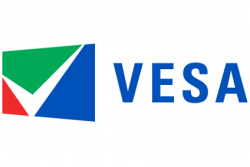VESA has released a new version of its DisplayID standard that adds support for higher resolutions, HDR, AR and VR and variable and high refresh rates. The standard supports stand-alone or embedded displays.
The new standard is needed as the older EDID system is “nearing the end of its effectiveness” and the new version adopts a modular structure, based on the concept of “data blocks” – individually defined, self-contained data formats that each provide a specific set of related display information in a clear unambiguous manner. The idea is to offer flexibility as entire content can be constructed from any number of elements, predefined data blocks or descriptors. The specification addresses head-mounted and other types of wearable displays; provides a clearer way to define Adaptive-Sync (i.e., dynamic refresh rate); extends field sizes to support higher pixel counts; expands the magnitude of parameters needed to enable HDR; and supports high luminance.
 Syed Hussain, VESA board vice chairman and AMD Senior Display Domain Fellow said:
Syed Hussain, VESA board vice chairman and AMD Senior Display Domain Fellow said:
“EDID remains viable for lower-resolution devices, and the current framework allows for the smooth transition from EDID to DisplayID as modern displays migrate over time. While DisplayID 2.0 is a future-focused specification incorporating support for higher resolution and refresh rates as well as HDR and Adaptive-Sync, it can also co-exist with older products supporting EDID, further enabling us to help guarantee full-plug-and-play ability for consumers regardless of the type of display they own.”

